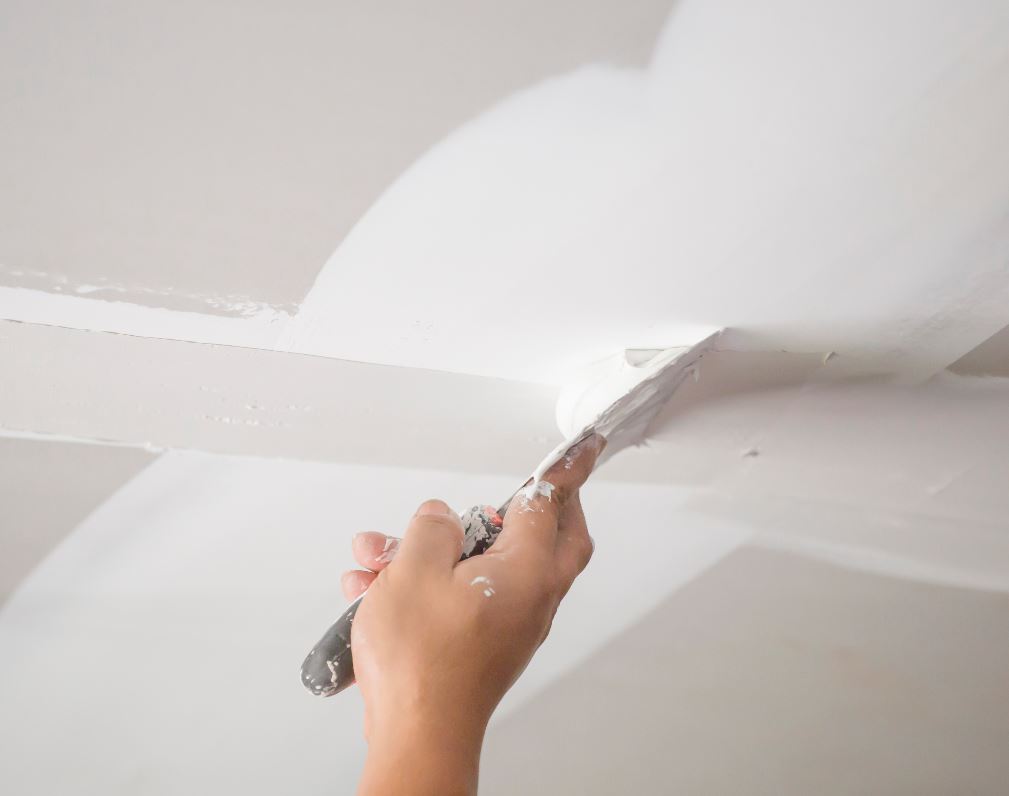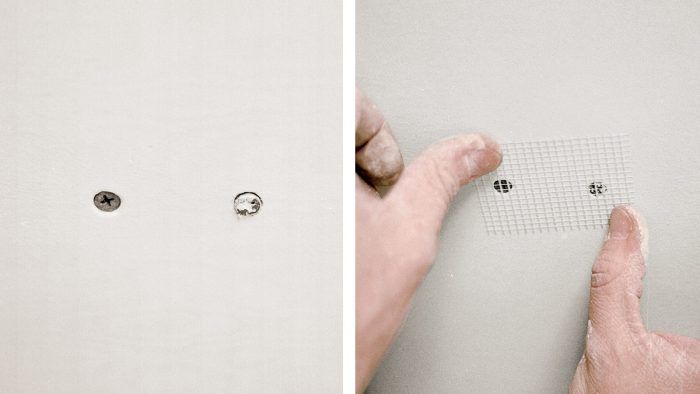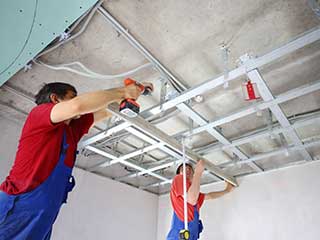A Comprehensive Overview to Learning Drywall Repair Work and Installation
This overview offers a comprehensive exploration of drywall repair work and installation, dealing with both amateurs and experienced experts. It lays out necessary devices, methods for patching and hanging sheets, and the crucial ending up procedures. Interior Painting. By understanding usual risks, people can achieve sleek results. Understanding these skills not just enhances one's home however additionally builds self-confidence in do it yourself endeavors. What foundational tips will guarantee a successful job from beginning to end?
Vital Tools for Drywall Repair Work and Installment
When starting on drywall fixing and installment, a couple of essential tools can greatly enhance the effectiveness and top quality of the job. A drywall knife, typically offered in various sizes, is vital for using joint compound and smoothing seams. A taping blade is likewise necessary for feathering sides and making certain a seamless finish. Additionally, a drywall saw or utility knife enables for precise cutting of drywall sheets to fit any type of space.

Step-by-Step Overview to Patching Holes
Patching holes in drywall is an uncomplicated procedure that can recover the wall surface's appearance and stability. To begin, the area around the hole ought to be cleaned up and any kind of loose debris removed. For little openings, a straightforward spackle or joint compound can be applied with a putty blade. Larger holes might call for a patch; an item of drywall can be cut to fit the hole, secured with glue or screws, and after that taped around the edges. As soon as the patch is in location, joint substance is used over the patch and feathered bent on blend with the bordering wall surface. After the compound dries, fining sand is needed to accomplish a smooth coating. Lastly, the repaired area can be primed and repainted to match the rest of the wall surface. This method ensures a seamless repair service, boosting the overall appearance of the drywall and keeping its architectural honesty.
Strategies for Hanging Drywall Sheets
After successfully repairing openings in drywall, the following action includes hanging brand-new drywall sheets to create a smooth surface area. To accomplish this, one should begin by determining the wall space accurately and cutting the drywall sheets check here to fit. It is important to hang the sheets horizontally for better architectural integrity, beginning from the top and working downwards.
Utilizing a drywall lift can streamline the procedure, especially for ceiling installments. Once positioned, securing the sheets with drywall screws at intervals of concerning 12 inches along the sides and 16 inches in the field is essential. This guarantees a strong hold and lowers the danger of drooping. For edges, the sheets must be cut to fit well, allowing for cleaner seams. It is suggested to startle the joints between sheets to reinforce the overall framework, producing a much more resilient coating all set for the following stage in the drywall installation process.
Ending Up Touches: Taping and Mudding
Completing the drywall installation includes the essential actions of mudding and taping, which guarantee a polished and smooth finish. Taping requires the application of joint tape over the seams in between drywall sheets. Drywall Installation Ogden Utah. This tape can be either paper or fiberglass mesh, with each type offering unique advantages. After taping, the following step is mudding, where joint substance, or "mud," is applied to cover the tape and fill any type of blemishes
Utilizing a drywall knife, the substance must be spread out uniformly, guaranteeing a feathery side to decrease noticeable modifications. Several layers are commonly needed, with sanding in between each layer to achieve a smooth surface. Careful attention throughout this process is crucial, as it greatly influences the final look of the wall. With the right strategy and perseverance, completion result will be a perfect structure all set for paint or ending up touches.
Usual Errors to Avoid in Drywall Projects

An additional usual mistake is not enabling sufficient drying time in between layers, which can catch wetness and endanger the surface. Additionally, disregarding to feather the sides properly can develop visible lines and imperfections. Skipping sanding or making use of incorrect techniques may leave harsh places. By understanding these mistakes, individuals can greatly improve the high quality of their drywall jobs and attain a professional-looking finish.
Regularly Asked Concerns
Can I Repair Drywall Without Specialist Help?
Yes, one can repair drywall without specialist assistance. With the right devices, materials, and support, people can successfully take care of small fixings. Nevertheless, substantial damage might require specialist expertise for ideal outcomes and sturdiness.
How Long Does Drywall Compound Take to Dry?
Drywall compound normally takes in between 24 to 48 hours to dry entirely, relying on factors such as humidity and temperature level. Thinner layers may dry out quicker, while thicker applications call for even more time for ideal results.
What's the Ideal Kind Of Paint for Drywall?
The most effective type of paint for drywall is usually a water-based latex paint. It supplies excellent protection, sturdiness, and ease of application, making it optimal for indoor walls while enabling very easy cleanup with soap and water.

How Do I Avoid Mold on Drywall?
To stop mold and mildew on drywall, warranty correct ventilation, control moisture levels, use mold-resistant products, and promptly attend to any leakages. Normal assessments and prompt removal of water damage are additionally crucial for long-term avoidance.
Is Drywall Recyclable After Elimination?
Drywall is recyclable after elimination, provided it is cost-free from contaminants like mold, paint, or various other dangerous materials. Recycling facilities can process it right into brand-new products, promoting sustainability and decreasing land fill waste in construction.
When beginning on drywall repair service and setup, a couple of necessary tools can significantly improve the performance and quality of the job. After effectively repairing holes in drywall, the following step involves hanging brand-new drywall sheets to produce a smooth surface. Finishing the drywall installation includes the crucial steps of taping and mudding, which guarantee a smooth and sleek coating. Attaining a refined finish in drywall projects can be difficult, and numerous common blunders can weaken the quality of the job. Yes, one can repair drywall without professional help.